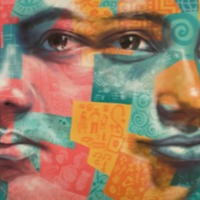
Nasreen Sheikh
There are an estimated almost 8 million people living in modern slavery in India (GSI 2018). India has a population of more than 1.3 billion people, there are still at least 270 million people living on less than US$1.90 per day. While laws, systems and attitudes regarding key 'fault lines' such as the caste system, gender and feudalism are rapidly changing, social change of this depth and scale necessarily takes time. In this context, it is perhaps unsurprising that existing research suggests that all forms of modern slavery continue to exist in India, including intergenerational bonded labour, forced child labour, commercial sexual exploitation, forced begging, forced recruitment into nonstate armed groups and forced marriage. Nasreen was born up into what she recognised as an oppressive society after witnessing the murder of her aunt and forced marriage of her older sister. To get out of her village, Nasreen travelled to Kathmandu to live with her cousin when she was nine years old. Here she experienced forced child labour and was forced to work twelve-hour days with little pay and poor living conditions. After two years the work ended, and she was left homeless. She received help from a stranger and began a distance education course. She recalls how this education brought her to understand the issues affecting Kathmandu society and sought out ways to address these. At fifteen years old she started Local Women’s Handicrafts to empower women and girls recovering from trauma and living in poverty.
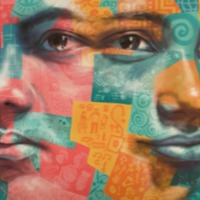
Kim Jo
The Global Slavery Index 2018 estimates that there are 2,640,000 people living in conditions of modern slavery in The Democratic People’s Republic of Korea (North Korea). Men, women and children are subjected to forced labour and sex trafficking. Government oppression in the DPRK prompts many North Koreans to flee the country in ways that make them vulnerable to human trafficking in destination countries. Many of the estimated 10 000 North Korean women and girls who have migrated illegally to China to flee abuse and human rights violation are particularly vulnerable to trafficking. Some lure, drug, detain or kidnap North Korean women on their arrival, others offer jobs but subsequently force the women into prostitution, domestic service, or forced marriage. If found, Chinese authorities often repatriate victims back to the DPRK where they are subjected to harsh punishment including forced labour in labour camps or death. In 2002 Kim Jo travelled to China wanting to start a business to support her family. However, upon arrival she was sol to a poultry farmer and forced to marry. The man that trafficked her offered Kim Jo money to escape her buyers, re-selling her each time to different people. In 2006 Kim Jo was deported back to North Korea where she was placed in a detention centre. In February 2007, Kim Jo finally left North Korea for good.

My Future Is My Choice
My Future Is My Choice provides a lesson plan and resources for teaching on forced marriage, child marriage and honour-based violence and the possible long-term consequences of these crimes. We approach this subject sensitively and gently beginning with a powerful true narrative in which child marriage is fortunately prevented. The theme is introduced through artwork, and as the content progresses students learn that this crime is closely tied to control, violence and exploitation. There are two 55-minute lessons, depending on the level of your students and is aimed at older teens, young adults, adults, B1+ (upper intermediate to advanced)Materials include Laila’s story, student worksheet, autonomous learning resources, audio recording and transcript, Shahina’s story: transcript of video narrative, information about human trafficking and modern slavery, slides, Teacher’s Guide.Audio for this lesson plan can be found at https://youtu.be/JkGirIiPGfg
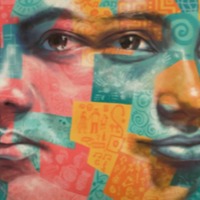
Hauwa
There are an estimated 1,386,000 people living in modern slavery in Nigeria (GSI 2018). Since 2009, Nigeria’s homegrown Islamist insurgent movement, Jama’atu Ahlis Sunna Lidda’awati wal-Jihad, popularly known as Boko Haram, which means “Western Education is Forbidden,” has waged a violent campaign against the Nigerian government in its bid to impose Islamic law. The attacks have increasingly targeted civilians, mainly in the northeastern states of Borno, Yobe, and Adamawa. Borno State, the birthplace of Boko Haram, has suffered the highest number of attacks. A range of issues, including widespread poverty, corruption, security force abuse, and longstanding impunity for a range of crimes have created fertile ground in Nigeria for militant armed groups like Boko Haram. Hauwa was abducted by Boko Haram in 2013. She was forced to convert to Islam and kill for the insurgents. Hauwa was able to escape forced marriage in the camp where she was being held by pretending to have stomach pains and being sent to the hospital.
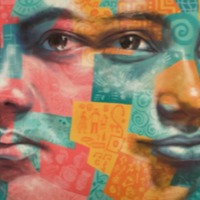
Ayak Piol Mabior
There are an estimated 465,000 people living in modern slavery in Sudan (GSI 2018). Between 1983 and 2005, the central government of Sudan enslaved tens of thousands of black South Sudanese Christian and traditionalist people. It was part of a genocidal war against South Sudan, with a simple aim: to force South Sudan to become Arab and Muslim. Ayak Piol Mabior was abducted from South Sudan with her mother and siblings and taken to the North. Her two brother died on the journey and Ayak was separated from the rest of her family upon arrival. Ayak was subjected to physical abuse and sexual violence on a regular basis. Ayak met a free worker named Rau and secretly became his wife, running away to Rau’s house when she became pregnant.

Bopha
The internal migration of Chinese people seeking work has created an opportunity for human traffickers in China. Moreover the gender imbalance caused by the One Child Policy and the cultural preference for male children, has caused a shortage of women which has led to the trafficking of women to be sold as brides. As a result many women find themselves either deceived by promises of employment, sold or abducted and forced into marrying Chinese men who have paid for them. The prevalence of poverty in China makes the poor more vulnerable to enslavement. With the National Bureau of Statistics estimating that 70,170,000 are still living in poverty, people are more desperate and thus more likely to be receptive to fraudulent job offers. Bopha left her factory job in Phnom Penh when she was told she could find work with a high salary in China. However, upon arrival Bopha was taken to the Bride Market and sold to a man with mental health issues.

Neng
The internal migration of Chinese people seeking work has created an opportunity for human traffickers in China. Moreover the gender imbalance caused by the One Child Policy and the cultural preference for male children, has caused a shortage of women which has led to the trafficking of women to be sold as brides. As a result many women find themselves either deceived by promises of employment, sold or abducted and forced into marrying Chinese men who have paid for them. The prevalence of poverty in China makes the poor more vulnerable to enslavement. With the National Bureau of Statistics estimating that 70,170,000 are still living in poverty, people are more desperate and thus more likely to be receptive to fraudulent job offers. Neng was just 14 when she was taken to China by her cousin who upon arrival forced her to marry a man 15 years her senior. Neng was able to escape and found her way to a shelter that seeks to support young girls who have survived human trafficking.
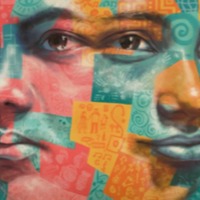
Anita G
In Tanzania, 4 out of 10 girls are married before their 18th birthday. A study by the United Nations Population Fund (UNFPA) estimated that 37 percent of Tanzanian women aged 20−24 years were first married or in union before the age of 18, between 2000−2011. Early marriage remains a significant problem in Sub-Saharan Africa, with UNICEF predicting that half of the world’s child brides will be African by 2050. Anita G.was 16 and in her second year of secondary school when her father forced her to leave school and get married. When Anita and her mother opposed the marriage, her father beat them both.

Park Ji-hyun
The Democratic People’s Republic of Korea (North Korea) is a source country for men, women and children who are subjected to forced labour and sex trafficking. Government oppression in the DPRK prompts many North Koreans to flee the country in ways that make them vulnerable to human trafficking in destination countries. Many of the estimated 10 000 North Korean women and girls who have migrated illegally to China to flee abuse and human rights violation are particularly vulnerable to trafficking. Some lure, drug, detain or kidnap North Korean women on their arrival, others offer jobs but subsequently force the women into prostitution, domestic service, or forced marriage. If found, Chinese authorities often repatriate victims back to the DPRK where they are subjected to harsh punishment including forced labour in labour camps or death. In the 1990s North Korea experienced a wide scale famine that killed up to 1 million people. After her family was displaced, Ji-hyun was left to care for her dying father. To escape starvation, she and her brother left, travelling with traffickers into China. Ji-hyun was told that if she wanted to provide for her family, she must marry a Chinese man. After being in China for 6 years Ji-hyun was reported to the authorities., sent back to North Korea and placed in a correctional facility before being sent to Chongin labour camp in Songpyong District. After becoming ill and unable to work, Ji-hun was dismissed from the labour camp. Alone and homeless she arranged to be re-trafficked back to China in order to find the son she had left behind. Once reunited, they escaped with the help of a man who Ji-hyun fell in love with. They all now live as a family in the UK.
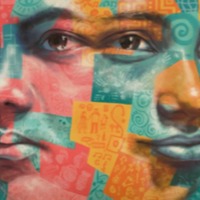
Ying B.
Ying was forced into prostitution after she was trafficked to France, and then to the UK. She was able to escape and was helped by Trafficking Awareness Raising Alliance (TARA), a support service in Scotland for trafficking survivors. The majority of those trafficked to the UK have been identified victims of sexual exploitation, followed by adults exploited in the domestic service sector and other types of labour exploitation.
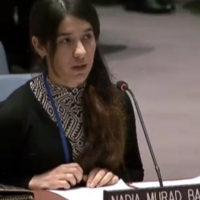
Nadia
Nadia Murad Basee Tah was one of thousands of people who have been enslaved by ISIS in Iraq. She is a member of the ethnic Kurdish minority Yazidi people. In August 2014, 10,000 Yazidis were killed or enslaved during the Sinjar Massacre in northern Iraq. ISIS seized control of Sinjar district, home to about 350,000 Yazidis. After killing the men, they took women and children into captivity. Along with all 1100 women and children from her village of Kocho, Nadia was captured. ISIS also killed six of her brothers, and her mother (who was too old for sexual enslavement). Nadia was taken with 150 other women and girls, ranging from nine to 28 years old, to Mosul. The women and girls were then distributed from centers. This system allows ISIS militants to take and use women and girls, then return us to the center. Like the other women and girls, Nadia was raped and tortured. Nadia escaped to a refugee camp, remained there for a year, then immigrated to Germany through a visa program to treat and host women and girls who have escaped ISIS captivity. In December 2015, the Yazda organization helped her to speak before the UN Security Council. Since then, she had campaigned internationally to raise awareness about the Yazidi genocide and the plight of Yazidi women and girls.